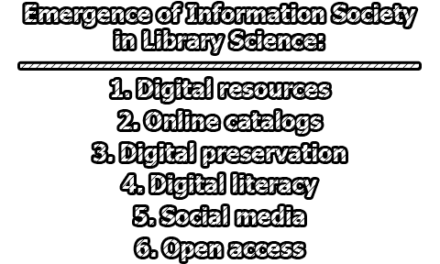Importance of RFID Systems in Libraries:
Radio Frequency Identification (RFID) systems play a crucial role in modernizing and improving library management processes. These systems offer several advantages over traditional methods of library management, contributing to increased efficiency, enhanced security, and improved user experience. Here’s an exploration of the importance of RFID systems in libraries:
1. Automated Check-In and Check-Out: RFID technology streamlines the check-in and check-out processes in libraries. Each library item is affixed with an RFID tag containing unique identification information. When a patron wants to borrow a book, they can simply place it near an RFID reader. The reader detects the RFID tag, registers the transaction, and updates the library’s database in real-time.
Benefits:
- Efficiency: The process is much faster compared to traditional barcode scanning, reducing wait times for patrons and allowing library staff to focus on other tasks.
- Accuracy: RFID tags are more durable than barcodes, reducing the likelihood of errors in the scanning process.
- User-Friendly: Patrons can quickly and easily check in and check out their items without the need for manual assistance, enhancing the overall user experience.
2. Efficient Inventory Management: RFID tags enable libraries to conduct rapid and accurate inventory management. Librarians can use handheld or fixed RFID readers to scan shelves and quickly identify items that are out of place or missing. This eliminates the need for manual inventory checks, which can be time-consuming and prone to errors.
Benefits:
- Time Savings: RFID technology allows librarians to perform inventory checks in a fraction of the time it would take using traditional methods.
- Reduced Human Error: The automated nature of RFID inventory management reduces the risk of human error associated with manual counting and sorting.
- Real-Time Updates: The system provides real-time updates to the library’s catalog, ensuring that the online database accurately reflects the current status of the collection.
3. Enhanced Security: RFID technology contributes significantly to improving the security of library collections. Unlike traditional barcodes, RFID tags can be read without a direct line of sight, making it more challenging for users to tamper with or remove them without detection.
Benefits:
- Anti-Theft Measures: RFID-enabled security gates at library exits can trigger alarms if an item with an active RFID tag hasn’t been properly checked out.
- Tamper Detection: The non-line-of-sight reading capability makes it harder for individuals to tamper with or remove RFID tags without triggering security measures.
- Improved Recovery: In the event of theft, RFID data can aid in tracking and recovering stolen items more effectively than traditional methods.
4. User Self-Service: RFID technology empowers library patrons with self-service options, allowing them to check out and return items independently. Self-checkout stations equipped with RFID readers enable users to complete transactions without the need for direct interaction with library staff.
Benefits:
- Convenience: Users appreciate the convenience of being able to handle routine transactions on their own schedule.
- Reduced Queues: Self-service options reduce lines at the circulation desk, leading to quicker transactions during peak times.
- User Empowerment: Patrons gain a sense of autonomy and control over their library transactions, contributing to a positive user experience.
5. Faster Processing Time: The speed of RFID technology significantly accelerates various library processes. From sorting returned items to searching for specific books, RFID systems contribute to a more efficient workflow, reducing the time required for routine tasks.
Benefits:
- Quick Returns: Automated sorting systems equipped with RFID readers can rapidly process returned items, allowing them to be quickly shelved or prepared for re-circulation.
- Improved Search: RFID-enabled handheld devices assist librarians in quickly locating specific items on the shelves, enhancing the efficiency of resource retrieval.
- Streamlined Operations: The overall acceleration of processes leads to a more streamlined and responsive library environment, benefiting both staff and patrons.
6. Remote Book Drops: RFID technology facilitates the use of remote book drops, allowing patrons to return library items outside of regular operating hours. Automated book return systems equipped with RFID readers enable users to drop off their items in designated slots. The RFID reader records the return, updating the library’s database accordingly.
Benefits:
- Extended Accessibility: Patrons can return items at their convenience, even when the library is closed, enhancing accessibility and accommodating diverse schedules.
- Reduction in Overdue Fines: Automated returns reduce the likelihood of overdue fines, as patrons can return items promptly even outside regular hours.
- Efficiency in Handling Returns: Library staff can focus on other tasks while automated systems handle the processing of returned items.
7. Data Accuracy and Analytics: RFID systems provide accurate and real-time data, offering librarians valuable insights into usage patterns, popular resources, and overall library performance. The data collected through RFID technology can be analyzed to make informed decisions regarding collection development, resource allocation, and service enhancements.
Benefits:
- Informed Decision-Making: Librarians can use data analytics to make informed decisions about purchasing new materials, reallocating resources, and optimizing library services.
- User Behavior Analysis: Understanding user behavior through RFID data allows for tailored services and improved user experiences.
- Strategic Planning: The data collected supports long-term planning, helping libraries adapt to changing community needs and technological trends.
8. Integration with Library Management Systems: RFID technology seamlessly integrates with existing library management systems, ensuring compatibility and interoperability. This integration enhances the overall efficiency of library operations by creating a cohesive and interconnected environment where RFID data seamlessly interacts with the library’s broader information infrastructure.
Benefits:
- Unified Information: RFID integration ensures that data from RFID transactions is synchronized with the library’s central database, providing a unified and up-to-date view of the entire collection.
- Streamlined Processes: The integration reduces the need for manual data entry and minimizes the risk of discrepancies between different systems, streamlining overall library processes.
- Interconnected Services: Integration enables a seamless flow of information between different library services, enhancing the overall user experience.
9. Accessibility for People with Disabilities: RFID systems can be designed to enhance accessibility for individuals with disabilities. For example, visually impaired users can benefit from RFID-enabled audiobooks and devices that guide them to locate and borrow materials independently. This fosters inclusivity and ensures that library services are accessible to a diverse range of patrons.
Benefits:
- Inclusive Services: RFID technology can be leveraged to develop assistive technologies that cater to the specific needs of individuals with disabilities, promoting inclusivity.
- Independence: RFID-enabled features empower users with disabilities to navigate the library and access resources independently, fostering a sense of self-reliance.
- Customizable Solutions: Libraries can tailor RFID-based solutions to address the unique requirements of different disability groups, creating a more accommodating environment.
10. Cost-Effective in the Long Run: While the initial investment in RFID technology may be significant, the long-term benefits contribute to cost-effectiveness. The efficiency gains, labor savings, and improved resource management result in a positive return on investment over time, making RFID systems a financially sound choice for modern libraries.
Benefits:
- Labor Savings: Automation of routine tasks reduces the need for manual labor, allowing library staff to focus on higher-value activities.
- Reduced Errors: The accuracy of RFID systems minimizes the costs associated with errors in inventory management, circulation, and security.
- Improved Resource Utilization: Libraries can allocate resources more effectively based on data-driven insights, optimizing the use of budget and personnel.
In conclusion, RFID systems in libraries are transformative, providing automation, security, and improved user experiences. As technology continues to advance, RFID will likely play an even more central role in shaping the future of library services.

Library Lecturer at Nurul Amin Degree College










